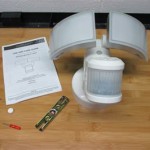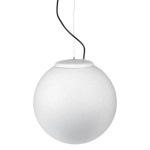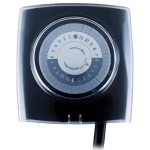Indoor and Outdoor Lighting Design: Illuminating Your Spaces
Lighting design is a crucial aspect of any architectural project, playing a vital role in functionality, aesthetics, and mood. From the warm glow of a living room to the strategic illumination of a retail space, lighting design shapes how we experience and interact with our surroundings. This article delves into the multifaceted world of indoor and outdoor lighting design, exploring the key considerations and principles that guide its implementation.
Understanding the Fundamentals of Lighting Design
Effective lighting design hinges on a thorough understanding of fundamental concepts. These include the following:
- Light Sources: The types of light sources available are diverse, ranging from traditional incandescent bulbs to energy-efficient LED lights. Each source possesses specific characteristics in terms of color temperature, lumen output, and energy consumption, making it crucial to choose the appropriate source for the desired effect.
- Light Distribution: The way light is directed and diffused is essential for creating the desired ambiance and functionality. Different types of fixtures, such as spotlights, floodlights, and pendant lights, offer distinct distribution patterns.
- Color Rendering Index (CRI): This value measures the ability of a light source to accurately render colors. A higher CRI indicates more natural color rendition, which is particularly important for spaces where color accuracy is critical, such as art galleries or retail stores.
- Light Levels: The amount of illumination required varies depending on the intended use of a space. Tasks such as reading or cooking necessitate higher light levels than ambient lighting for relaxation. Lighting designers use lux measurements to determine appropriate light levels.
These fundamental concepts provide a framework for understanding the various elements that interplay in lighting design, enabling designers to create spaces that are both visually appealing and functionally effective.
Indoor Lighting Design: Creating Ambience and Functionality
Indoor lighting design focuses on creating a cohesive and inviting atmosphere while fulfilling practical needs. This involves considering the purpose of each space, the desired mood, and the architectural features present.
Key considerations for indoor lighting design include:
- Layered Lighting: This technique involves combining different types of lighting to create depth and dimension. Layered lighting typically includes ambient lighting for overall illumination, task lighting for specific activities, and accent lighting to highlight architectural features or artwork.
- Color Temperature: The warmth or coolness of light is measured in Kelvin (K). Warm white (2700-3000K) is ideal for creating a cozy and inviting atmosphere, while cool white (4000-5000K) is better suited for tasks requiring visual clarity.
- Dimming Controls: Dimming controls provide flexibility in adjusting light levels to suit different moods and activities, allowing for a more dynamic and personalized lighting experience.
By carefully selecting lighting fixtures, incorporating layering techniques, and controlling color temperature and dimming options, indoor lighting design can contribute significantly to the overall success of a space.
Outdoor Lighting Design: Enhancing Security, Aesthetics, and Functionality
Outdoor lighting design serves a different purpose than indoor lighting, focusing on enhancing security, defining spaces, and creating visual interest. With the goal of providing safe and functional outdoor environments, outdoor lighting design incorporates specific principles and techniques.
Some key elements of outdoor lighting design include:
- Security Lighting: Motion sensor-activated lights deter intruders and provide visibility in dark areas, enhancing safety and security. Proper placement and lighting levels are crucial for effective security lighting.
- Landscape Lighting: Highlighting trees, shrubs, and other landscaping features transforms outdoor spaces into visually appealing and welcoming environments. Subtle lighting techniques can create depth, texture, and drama, enhancing the overall aesthetic.
- Architectural Lighting: Illuminating architectural features like facades, columns, and windows adds visual interest and emphasizes the building's design elements. This technique is particularly effective in enhancing the nighttime presence of structures.
Outdoor lighting design requires careful consideration of factors such as safety, energy efficiency, and environmental impact. Selecting appropriate light fixtures, controlling light spill, and minimizing light pollution contribute to a well-planned and sustainable outdoor lighting solution.
Both indoor and outdoor lighting design are essential components of creating functional and aesthetically pleasing spaces. By understanding the principles and techniques of lighting design, architects, designers, and homeowners can harness the power of light to enhance their surroundings.

Best Indoor Outdoor Lighting Options For Your Home Casago

New Lighting Trends 2024 To Uplift Your Interior Design

How To Balance Indoor And Outdoor Lighting Popular Photography

Our New Indoor Outdoor Lighting Display Design Showroom Decor Interior

19 Stylish Outdoor Lighting Ideas The Best Patio

Indoor And Outdoor Lighting Save Money Energy With Led Home Auckland Electrician North Shore Lloyd Electrical Albany

Simple Modern Aesthetic Outdoor Lighting Ideas In 2024 Home Design Wall Interior

11 Best Cafe Lighting Design Ideas For Outdoor And Indoors

Feature Wall Lights Outdoor Lighting Design Modern Garden

Best Indoor Outdoor Lighting Options For Your Home Casago
Related Posts







